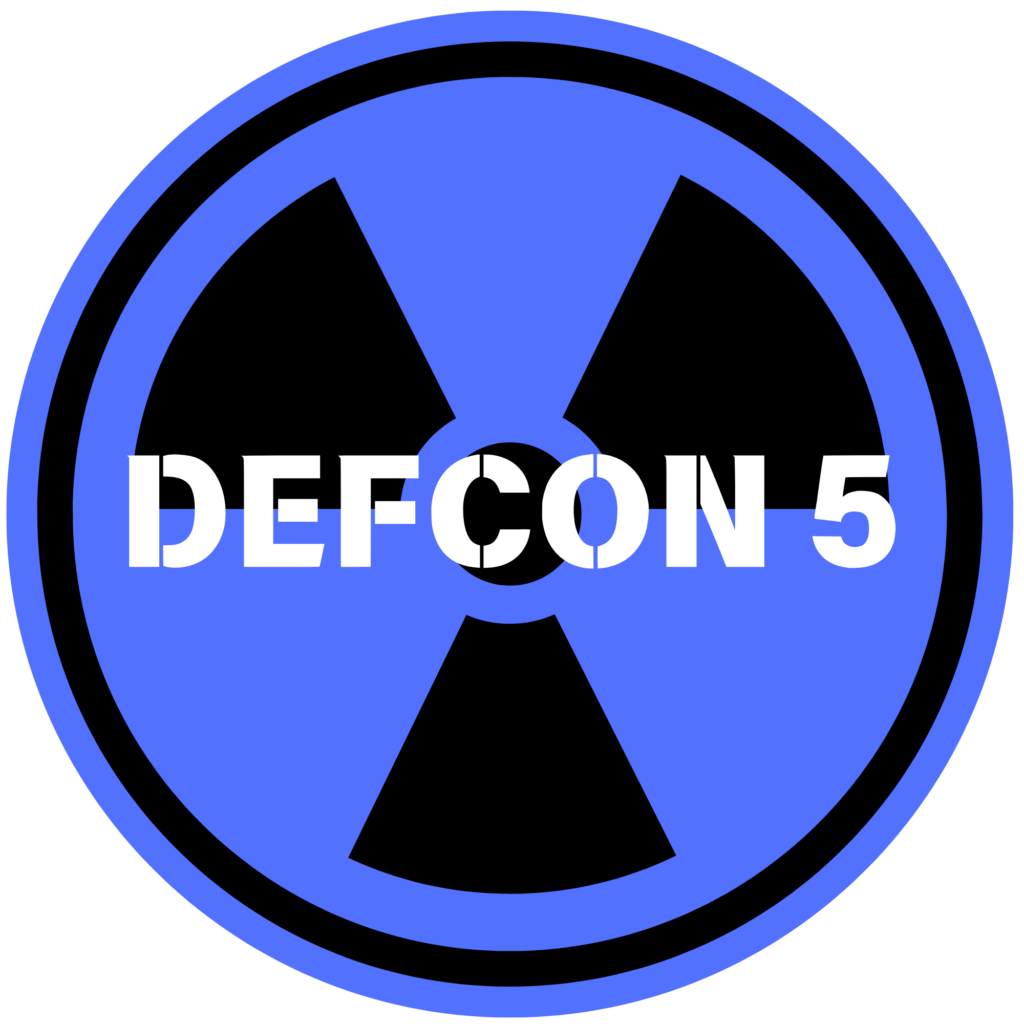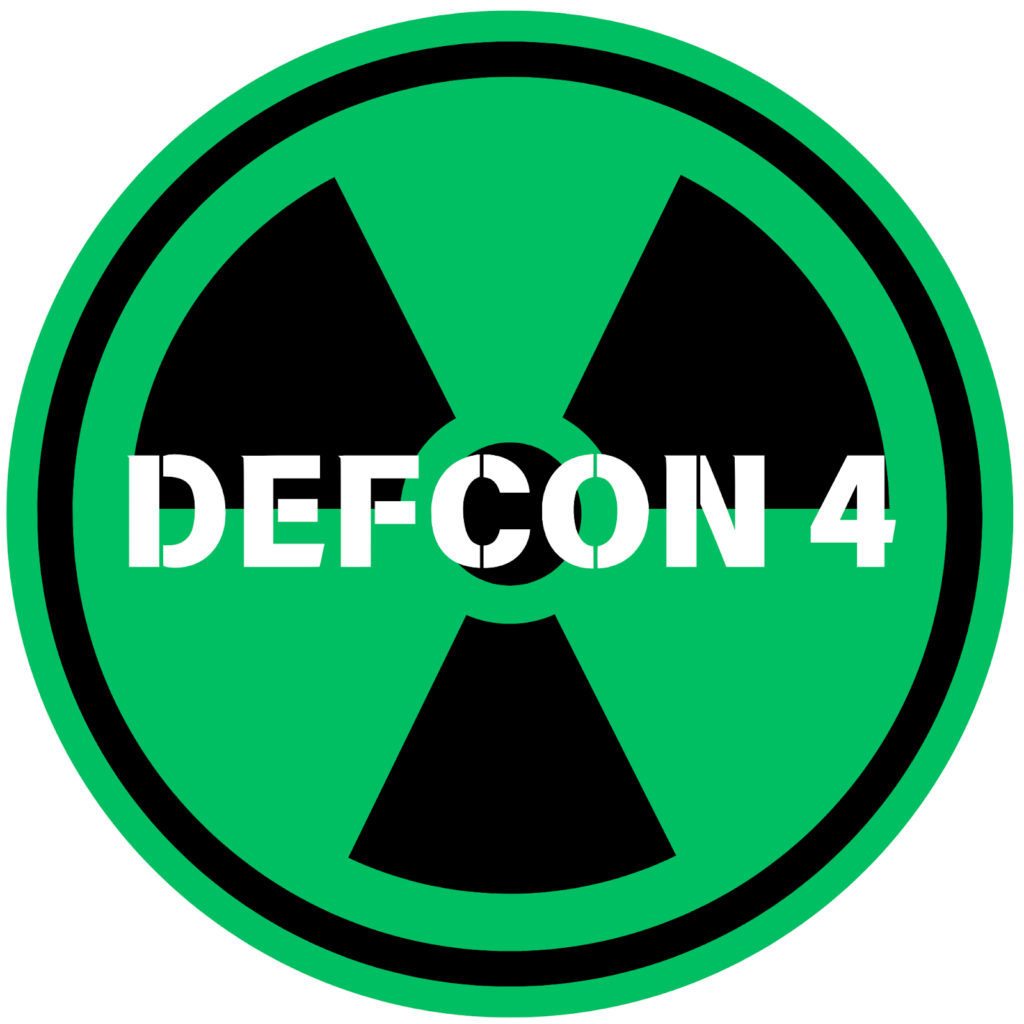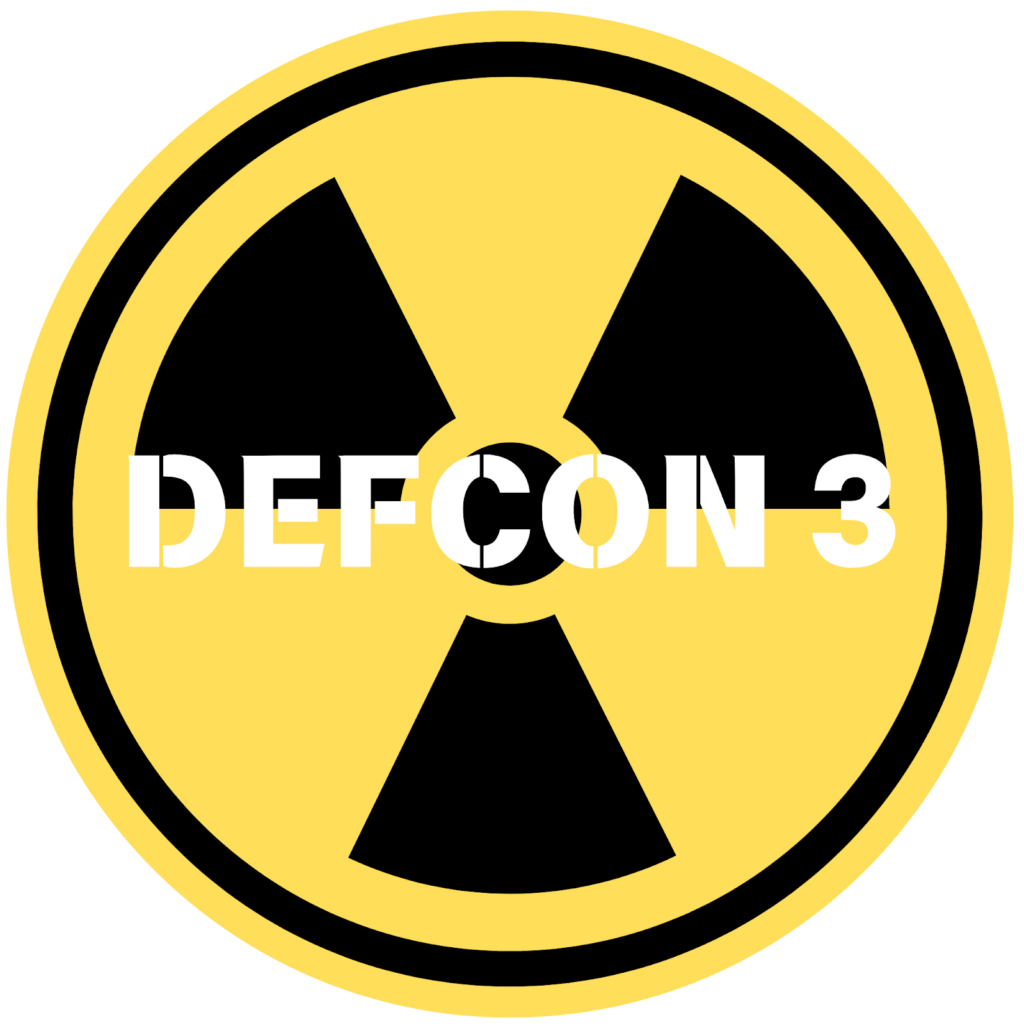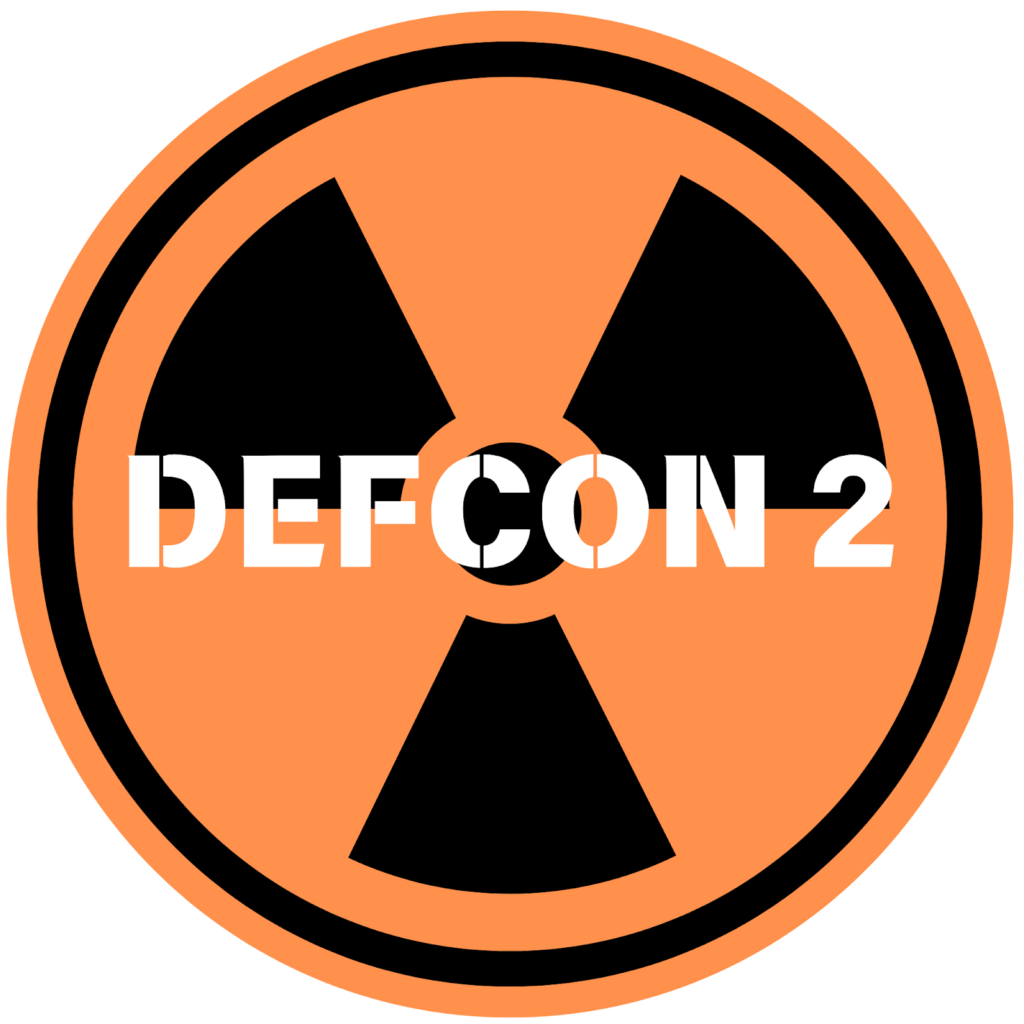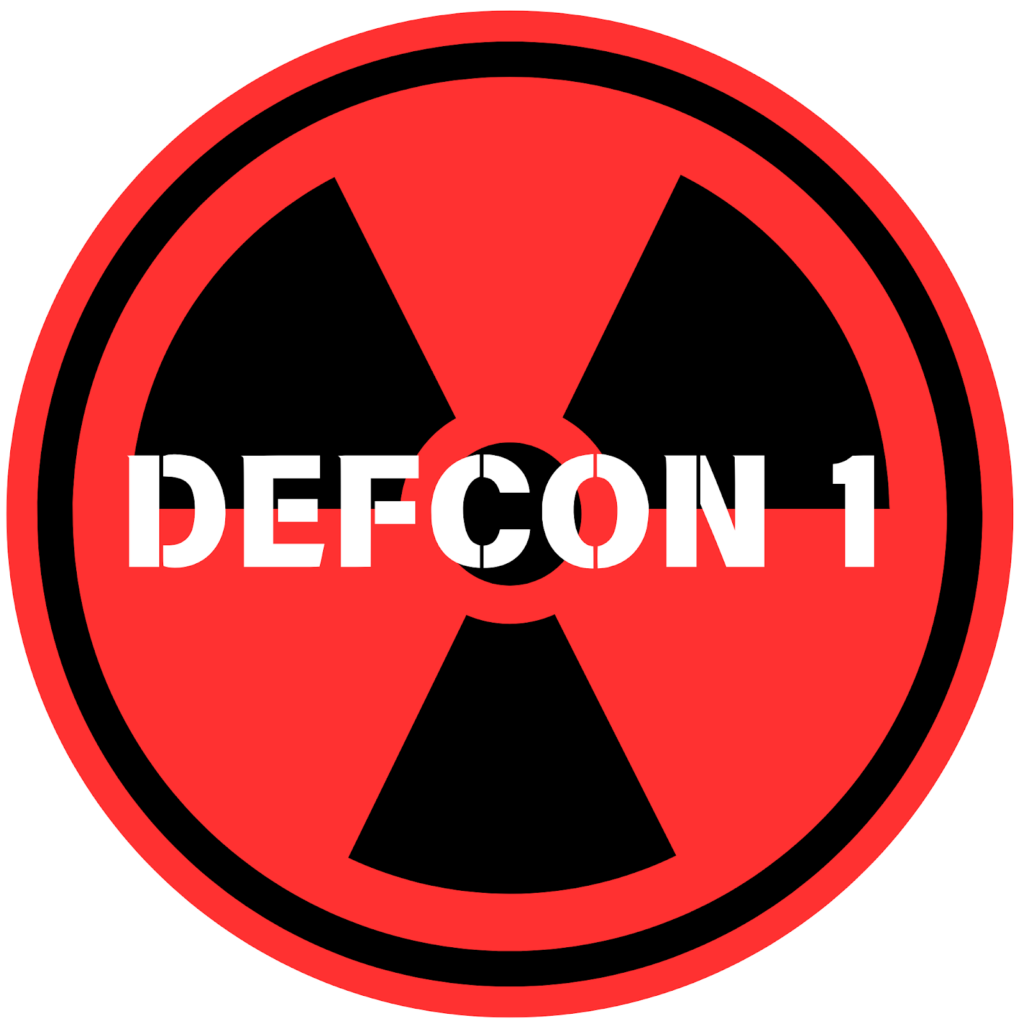DEFCON stands for Defense Readiness Condition. The US military uses this ranking system to signal its readiness for potential nuclear attacks.
The DEFCON system was created by the US Armed Forces in the 1950s, during the Cold War. The system was designed to provide a clear and concise way of communicating the current level of military readiness to military personnel and government officials.
The DEFCON system consists of five escalating levels of military readiness, with each level denoting a higher degree of preparedness. The DEFCON system’s lowest threat level is DEFCON 5, while DEFCON 1 represents the highest threat level: readiness for war.
The US has never reached DEFCON 1. The highest it has ever been is thought to be a DEFCON 2 status, which occurred during the Cuban Missile Crisis.
What DEFCON level are we at?
In February 2022, a senior official from the US Department of Defense affirmed that the federal government would not publicly disclose the current DEFCON level, adding, “We are confident in our ability to defend the homeland and our allies and partners.”
However, Open Source Intelligence (OSINT) runs a Global Threat Monitor and estimates that since February 28, 2022, it has been at DEFCON level 3. This is due to the war in Ukraine and Russian President Putin’s threat of nuclear attack.
Different levels of DEFCON explained
DEFCON 5
This is the lowest state of readiness, which means that the US is at peace, and there is no immediate threat to national security. This is the default state of readiness for the military.
Also known as ‘blue alert’ or ‘normal readiness,’ it indicates there is no immediate need to be on a high state of alert.
The US Department of Defense has specific terminology to designate how its military exercises relate to DEFCON level situations.
The DEFCON 5 exercise term is ‘Fade Out.’
DEFCON 4
This level indicates an increased risk of a military conflict or terrorist attack. At DEFCON 4, the military is on heightened alert, and they may increase surveillance and intelligence-gathering activities.
The military may also begin pre-positioning troops and equipment to be better prepared to respond to any potential threats.
The DEFCON 4 exercise term is ‘Double Take.’
DEFCON 3
DEFCON 3 indicates there is a significant risk of an imminent attack. The military will further increase its surveillance and intelligence-gathering activities and will be ready for an attack. At DEFCON 3, the Air Force can be prepared in 15 minutes.
The US military has been at DEFCON 3 during times of heightened tension, including Operation Paul Bunyan, the September 11 attacks, and the Yom Kippur War.
It’s important to mention that DEFCON 3 does not indicate an actual state of war. Rather, it signifies heightened readiness whereby vacations are canceled, troops are called back to their units, and arrangements are made for deployment if required.
The DEFCON 3 exercise term is ‘Round House.’
DEFCON 2
This level represents an extremely high level of military readiness, with nuclear war or other threats considered to be inevitable. The military is prepared for an imminent attack and may take action to defend against the threat.
This may involve deploying troops and equipment to defensive positions and increasing security measures at key installations. At DEFCON 2, the army can be ready in less than six hours.
The DEFCON level was raised to 2 during the Cuban Missile Crisis and Persian Gulf War, reflecting the high state of alert and readiness of the US military at that time.
The DEFCON 2 exercise term is ‘Fast Pace.’
DEFCON 1
This is the highest level of readiness, which means that the United States is under attack or is in the midst of a large-scale military conflict.
At DEFCON 1, the military is fully mobilized and prepared for combat operations. This may involve the deployment of nuclear weapons, and the military will take all necessary steps to defend against the threat.
It has never been publicly announced or confirmed that the US has been at DEFCON 1. As far as anyone knows, the level has never been raised to this severity.
The DEFCON 1 exercise term is ‘Cocked Pistol.’
When has the DEFCON level been raised?
Although the DEFCON level and its past have been kept secret, OSINT lists a few notable occasions when it was raised.
It’s important to note that the DEFCON system is flexible and can be adjusted as needed to reflect the current threat environment. For example, the military may move from DEFCON 4 to DEFCON 3 in response to a specific threat and then return to DEFCON 4 once the threat has passed.
Additionally, the specific actions taken at each DEFCON level may vary depending on the situation. For example, in response to the Cuban Missile Crisis, the US Armed Forces were directed to DEFCON 3. Later, on October 24, Strategic Air Command received orders to raise its readiness level to DEFCON 2, while the other branches of the US Armed Forces maintained DEFCON 3.
The military will assess the threat environment and take appropriate action to defend against the threat. Ultimately, the purpose of the DEFCON system is to ensure that the military is prepared to respond to any potential threat to national security.
Laws and regulations of the DEFCON system
While no specific laws or regulations dictate the use of the DEFCON system, the President of the United States has the authority to change the DEFCON level as necessary in response to a threat. The DEFCON system is often used in conjunction with other emergency protocols, such as the Continuity of Government (COG) plan, which outlines procedures for maintaining the US government’s operations during a national emergency.
In some cases, such as during the Cuban Missile Crisis, the public was made aware of the increase in the DEFCON level due to the seriousness of the situation. However, in other instances, such as during the Gulf War, the change in the DEFCON level was not widely publicized.
In general, the public may not be directly informed of changes in the DEFCON level unless there is a specific need for them to take action or to be informed of a potential threat. However, in the event of a significant national security threat, the government may choose to make an announcement to the public about the increase in the DEFCON level and what actions are being taken to respond to the threat.




